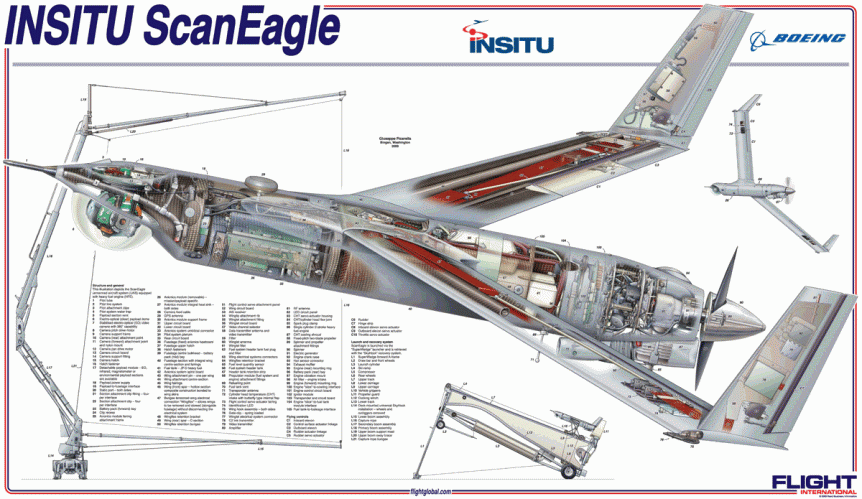Another pair of heavy-duty partners, Ballard Power Systems of Canada, normally powering city buses; and Boeing, through its subsidiary Insitu, team to create and fly viable fuel cell systems for drones. Insitu’s ScanEagle is already a world-beater for range and endurance, but it uses an internal-combustion engine (ICE), that although frugal, is not entirely green. Green Car Congress reports, “ScanEagle is 1.55 meters (5.1 feet) in length, has a wingspan of 3.11 meters (10.2 feet) and [a] maximum takeoff weight of 22 kilograms (48.5 lbs). The UAV can fly at a maximum speed of 41.2 meters per second (80 knots), reach a ceiling of 5,944 meters (19,500 feet),” and has flown over one million mission hours, making it a leader in multiple applications. Ballard’s Protonex® fuel cell systems have been used for over a decade to power drones of varying sizes, but all with ranges and endurance equaling or exceeding most of their ICE cousins. Improving the Breed In a December …
Aerovel Autonomously Performs Takeoff, Flight, and Landing – Twice!
As explained on their YouTube posting, Aerovel’s autonomous flight of their Flexrotor aircraft shows a remarkable level of adaptability and control. “In what are believed to be the first-ever flight cycles of an unmanned aircraft based on an unmanned boat, Flexrotor launches from a remotely-controlled skiff while underway, climbs out as a helicopter, transitions to wing-borne flight, images the skiff while flying at low and high speeds, transitions back to thrust-borne flight, and retrieves autonomously onboard. The aircraft then shuts down, is automatically refueled and restarted, and repeats the first flight, finally being secured onboard in a docking station.” Aerovel notes that the boat was radio controlled, but the Flexrotor Pandora flew the mission on its own and without human intervention during the October 16 flight over the Columbia River in eastern Oregon. This repeated maneuver is as thrilling as it looks. Tad McGeer, the founder and president of Aerovel, wrote of an earlier flight, ““transition requires a climb, pitch-over, …

